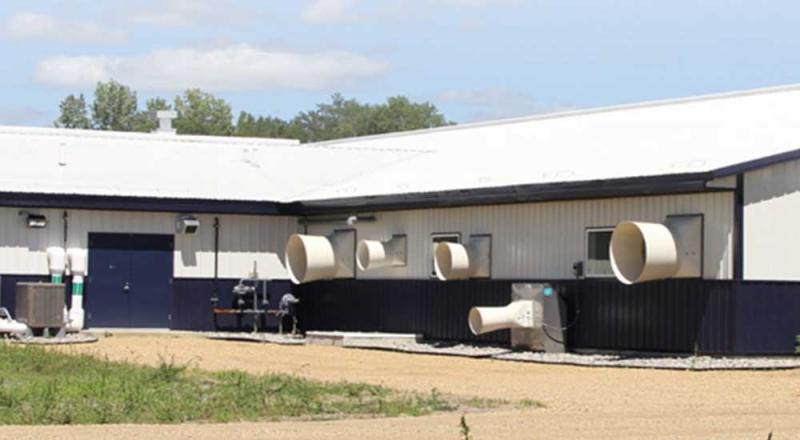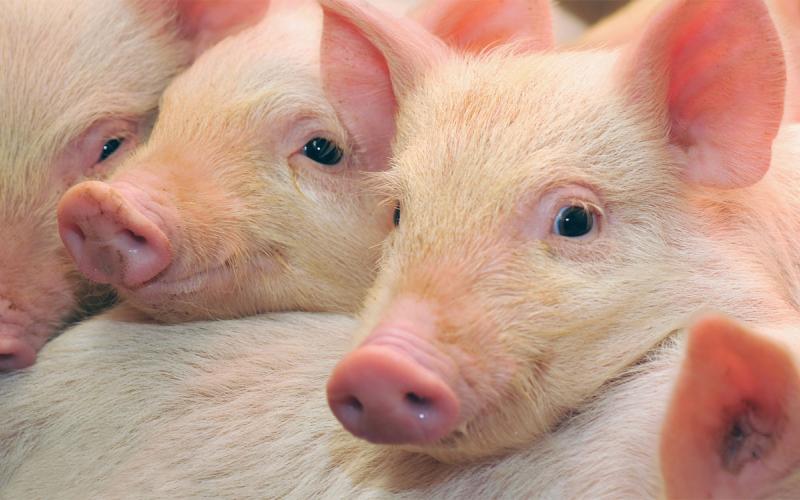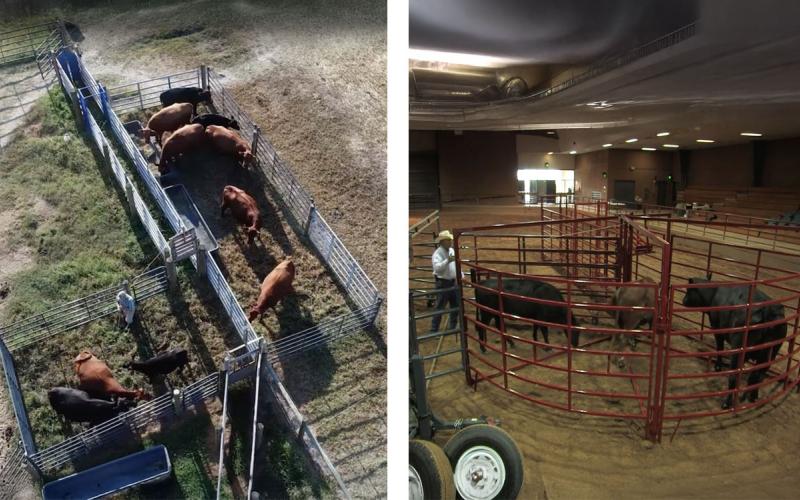
Written collaboratively by Ryan Samuel, Xufei Yang, Casey Zangaro and Joe Darrington.
Mechanical ventilation systems depend on fans to push or pull air through the system against a modest static pressure. Did you know that not all fans are created equal? Bess labs at the University of Illinois performs fan performance tests that can be found online.
Evaluating Fan Performance
To give a sense of the variability of fan performance, Table 1 below was created from the Bess lab data to demonstrate the average and range of performance based on the overall design of the fan.
As we move into the summer season it is important to check for proper function of your fans and evaluate wear and tension of belts in belt driven fans. If you identify a fan that is not operating, or not operating well, and requires replacement; make sure to replace it with a fan of comparable flowrate capacity at 0.05 inH2O static pressure. The last thing that you want to have happen is decrease your summer ventilation flowrate and potentially increase heat stress potential in the summer. Below is a discussion regarding how to utilize Table 1.
| Fan Size | Airflow (cfm) 0.05" SP |
VER (cfm/W) 0.05" SP |
Airflow (cfm) 0.10" SP |
VER (cfm/W) 0.10" SP |
Air Flow Ratio |
|---|---|---|---|---|---|
| Average 12" | 1,654 | 8.73 | 1,568 | 8.14 | 0.74 |
| Range 12” | 2,340 - 850 | 10.3 -7.3 | 2,260 - 780 | 9.7 - 6.9 | 0.89 - 0.46 |
| Average 16" | 2,906 | 11.18 | 2,765 | 10.42 | 0.81 |
| Range 16” | 3,740 – 2,190 | 14 - 8.6 | 3,580 – 2,050 | 13.2 - 7.7 | 0.89 - 0.57 |
| Average 18" | 3,916 | 10.99 | 3,730 | 10.30 | 0.82 |
| Range 18” | 4,780 – 3,090 | 13.8 - 8.5 | 4,580 – 3,000 | 12.9 - 8.1 | 0.90 - 0.58 |
| Average 20" | 4,171 | 11.15 | 3,971 | 10.39 | 0.81 |
| Range 20” | 5,370 – 2,930 | 13.2 - 8.2 | 5,190 – 2,630 | 12.2 - 7.7 | 0.90 - 0.68 |
| Average 24" | 6,257 | 13.51 | 5896 | 12.47 | 0.79 |
| Range 24” | 7,680 – 4,450 | 19.4 - 8.9 | 7,270 – 4,090 | 17.1 - 8.7 | 0.91 - 0.59 |
| Average 36" | 11,641 | 17.19 | 10,803 | 15.31 | 0.72 |
| Range 36” | 16,610 – 7,630 | 23.5 - 9.4 | 15,840 – 6,940 | 20.8 - 9.0 | 0.89 - 0.28 |
| Average 48" | 22,619 | 20.35 | 21,128 | 18.20 | 0.76 |
| Range 48” | 28,400 – 16,500 | 26.8 - 13.7 | 26,800 – 14,600 | 23.4 - 12.7 | 0.86 - 0.41 |
| Average 52" | 26,730 | 21.30 | 25,390 | 18.65 | 0.77 |
| Range 52” | 31,100 – 19,100 | 29.5 - 13.4 | 31,000 – 17,100 | 24.8 - 12 | 0.87 - 0.57 |
| Average 60" | 31,557 | 21.11 | 29,171 | 18.74 | 0.69 |
| Range 60” | 34,600 – 28,400 | 25.1 - 18.0 | 32,400 – 25,600 | 21.7 - 16.1 | 0.78 - 0.56 |
The airflow of the various fan sizes is dependent on fan size, blade design, motor HP, and the air pressure it must work against. The first column of the table contains the row labels indicating fan size and whether the row contains average values or describes the range of performance within the size class. The second column documents the airflow in cubic feet per minute (CFM) at 0.05 inH2O static pressure. The static pressure is the difference between indoor and outdoor air pressure; it determines air velocity through the inlets which is important for proper air distribution in a room or barn (see Basic Ventilation System Design for Producers article). The desired inlet velocity is 800 to 1,000 feet/min. The third column represents ventilation efficiency rate (VER) at 0.05 inH2O, which tells us the power efficient of the fan in cubic feet per minute generated by the fan per watt of power input. This allows us to calculate the electricity used to maintain a specific airflow rate with a particular fan size individually or in a fan bank.
The fourth and fifth column in the table show the airflow and VER at 0.10 inH2Ostatic pressure of. Notice that the airflow expected and the efficiency of the fan both decrease. Depending on the tightness of your barn and where you would like the system to operate, you can plan with either the 0.05 or 0.10 inH2O. The last column is the airflow ratio; this represents the fraction of airflow that is moved at 0.2 inH2O compared to the design airflow rate at 0.05 inH2O. The closer the ratio is to 1, the less potential effect of changes in static pressure on airflow, meaning that the fans will deliver more consistent airflow. This is of particular importance for minimum stage fans.
As an example, consider you are assessing what airflow rates you have in your barn at different stages. If a 16-inch fan is in a barn, but no labels are left on the fan to determine the specific manufacturer to find the correct airflow rate from that fan. The table notes that the average is about 3,000 cfm at 0.05 static pressure and about 2,800 cfm at 0.10 static pressure. This is helpful in determine stages for the barn as well at total ventilation output (see Basic Ventilation System Design for Pork Producers).
In Summary
The key takeaway from this article is that fan size is a very rough gauge of fan capacity and performance. When selecting new or replacement fans it is critical that you evaluate the flowrate requirement at the static pressure you will be operating, compare the efficiency of fans that will meet your performance needs, and ask your equipment supplier for detailed performance specifications. A 12” fan is not a 12” fan.


